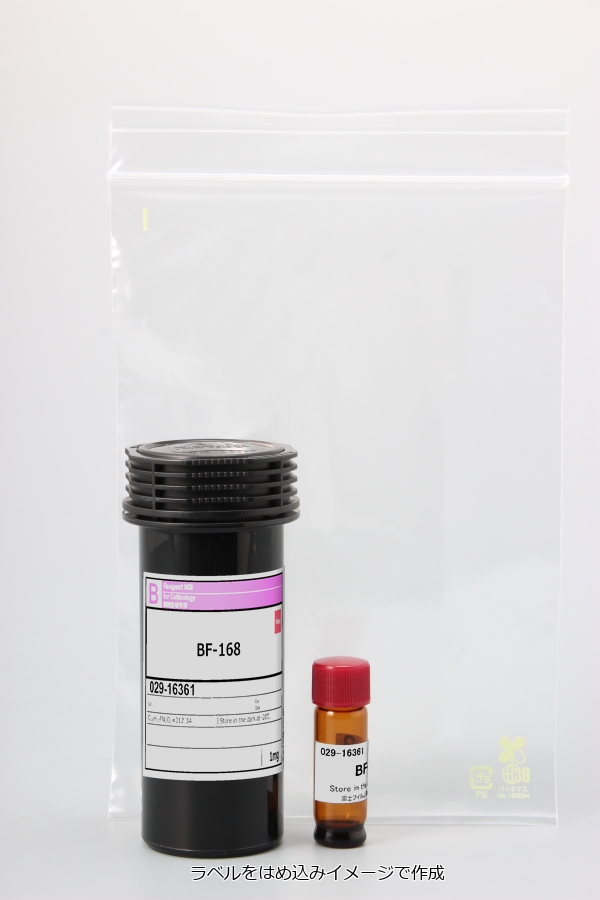BF-168
- for Cellbiology
- Manufacturer :
- FUJIFILM Wako Pure Chemical Corporation
- Storage Condition :
- Keep at -20 degrees C.
- Molecular Formula :
- C18H17FN2O2
- Molecular Weight :
- 312.34
- Structural Formula
- Label
- Packing
- SDS
|
Comparison
|
Product Number
|
Package Size
|
Price
|
Availability
|
Certificate of Analysis
|
Purchase |
|---|---|---|---|---|---|---|
|
|
|
1mg
|
|
Out of Stock |
※Check availability in the US with the distributor.
Document
Application
Overview / Applications
| Outline | This product is for research use only. Do not administer it to human. for Alzheimer's Disease (AD)
BF-168 is a probe for senile plaques (SPs). It selectively binds SPs in AD brain sections and recognizes Aβ 1-42 positive diffuse plaques. BF-170 is a probe for neurofibrillary tangles (NFTs). It exhibits greater binding affinity to Tau fibrils such as NFTs, neuropil threads and paired helical filament than to Aβ fibrils. B-168 Solubility: Soluble in methanol and ethanol. Procedure:
References:
|
|---|
Property
Manufacturer Information
Alias
For research use or further manufacturing use only. Not for use in diagnostic procedures.
Product content may differ from the actual image due to minor specification changes etc.
If the revision of product standards and packaging standards has been made, there is a case where the actual product specifications and images are different.





